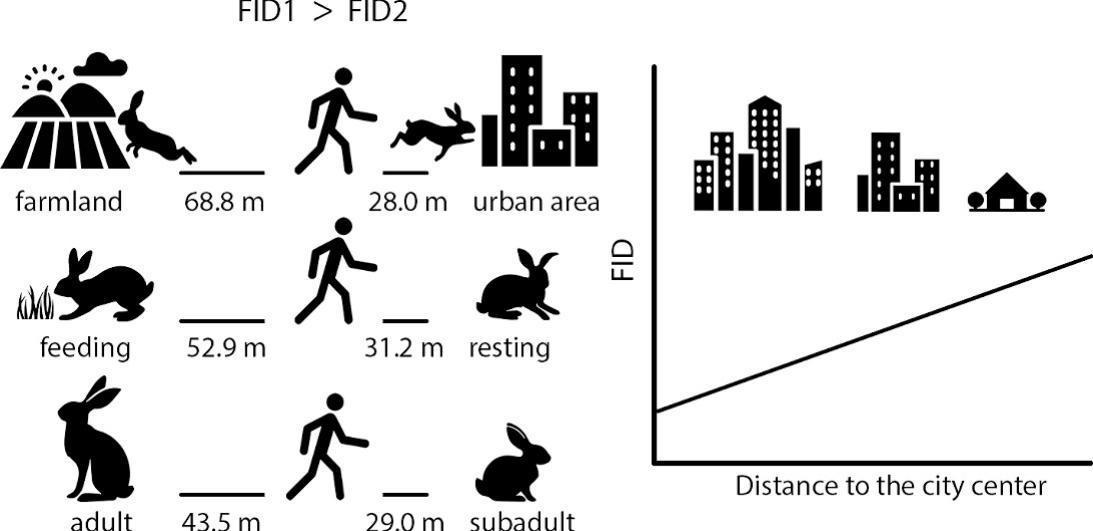
The European hare Lepus europaeus is an iconic but rapidly declining farmland specialist with recently confirmed populations in urban areas. However, their behavioral responses and adaptability to urbanization and life in human-dominated areas are fully unexplored. Here, using infrared cameras, we explored escape behavior (measured as the flight initiation distance) using 965 hare observations in urban and farmland areas in the Czech Republic and Austria (Central Europe) and its association with habitat type, distance to the city center, patch size, season, hare age and initial behavior. We found that European hares adjusted their escape behavior to habitat type and escaped significantly earlier in farmland (rural) habitats than in urban habitats. However, escape distances of hares did not differ between farmland types with different degree of habitat heterogeneity. We also revealed that urban hares escaped earlier when located further from the city center or in a larger study patch. Moreover, adult hares escaped earlier than subadults and foraging individuals escaped earlier than resting hares but both only in rural areas. Our results support high behavioral adaptability of European hares to human-dominated urban areas.